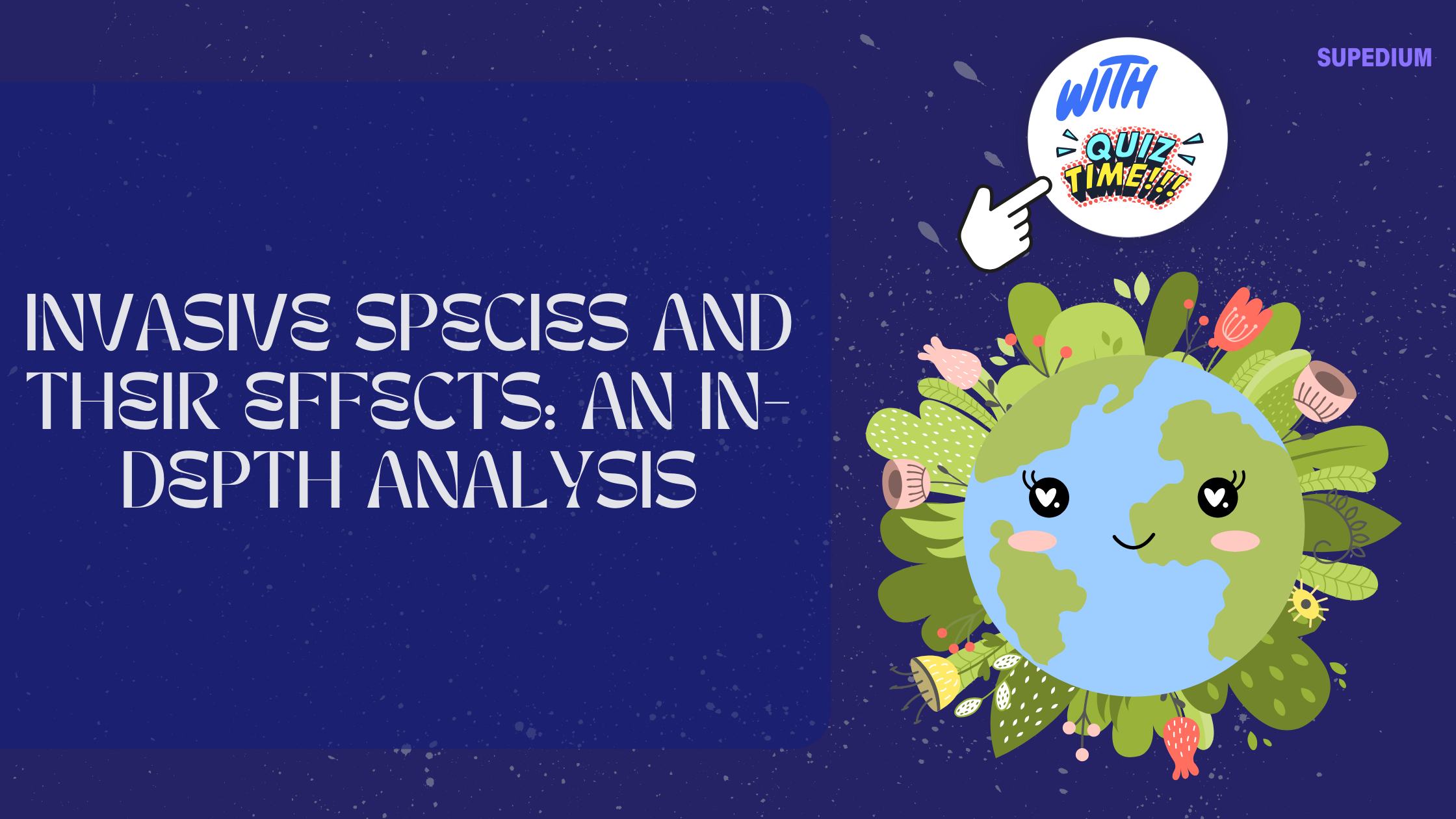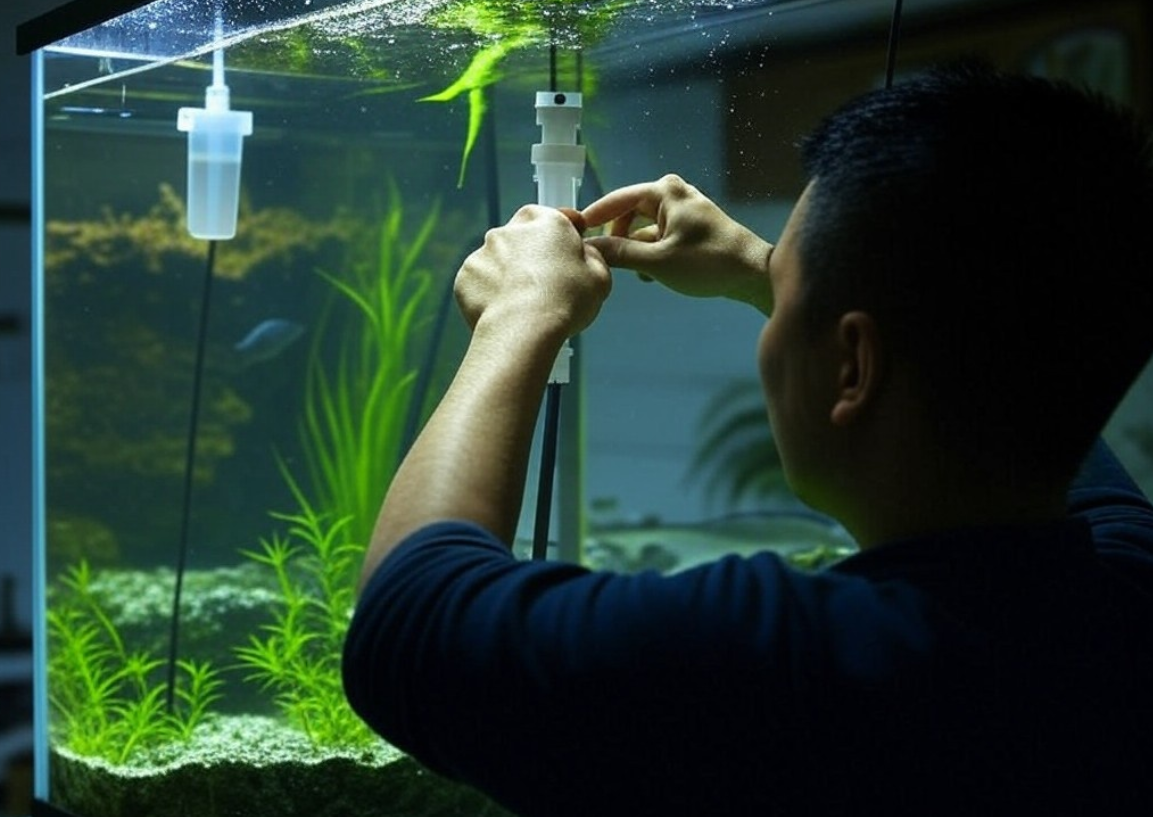Table of Contents
![]()
Introduction
Invasive species are organisms introduced to environments outside their native ranges, where they often cause significant disruption. These species, which can be plants, animals, or microbes, possess traits that allow them to outcompete native species, leading to a cascade of ecological and economic consequences. Understanding invasive species and their effects is crucial for managing biodiversity, safeguarding economies, and protecting human health.
Characteristics of Invasive Species
Invasive species share several key biological traits that contribute to their success in new environments. They typically exhibit high reproductive rates, allowing them to rapidly establish and spread. These species often have aggressive growth patterns and competitive abilities that enable them to outcompete native species for resources such as food, water, and habitat. Furthermore, they may lack natural predators or diseases in their new environment, which helps them thrive unchecked.
In addition to biological traits, invasive species are highly adaptable to varying environmental conditions. Their ability to tolerate a wide range of habitats and disturbances, such as changes in climate or human-induced modifications, further enhances their potential to become invasive.
Pathways of Introduction
Invasive species often enter new environments through human activities. Global trade and transportation play significant roles, with species arriving via shipping ballast water, packaging materials, and other transport mechanisms. Agriculture and horticulture also contribute, as non-native plants and animals are introduced intentionally for ornamental purposes or as livestock feed. Accidental releases of pets or aquarium species can also introduce invasive species into the wild.
Natural processes, though less common, can also facilitate the spread of invasive species. Climate change, which alters weather patterns and temperatures, can create favorable conditions for species to expand their ranges. Additionally, natural dispersal mechanisms, such as wind or water currents, can assist in the movement of species to new areas.
Ecological Impacts
The ecological impacts of invasive species are profound and varied. One major effect is the disruption of native species. Invasive species often outcompete native plants and animals for essential resources, leading to declines in native populations. For example, the invasive kudzu vine in the southeastern United States smothers native plants by blocking sunlight and outcompeting them for nutrients.
Invasive species can also introduce new diseases and parasites to native species. These diseases can further weaken or kill native populations, destabilizing the ecosystem. Moreover, invasive species can alter ecosystem functions. They may change nutrient cycling processes, modify habitat structures, or impact essential ecosystem services like pollination and water purification.
Economic and Human Health Impacts
The economic costs of invasive species are substantial. Agriculture can suffer from crop damage and livestock health issues caused by invasive pests and diseases. Fisheries and aquaculture industries are affected as invasive species disrupt aquatic ecosystems and outcompete native species. Management and control efforts to mitigate these impacts also incur significant costs.
Human health can also be at risk due to invasive species. Some invasives are vectors for diseases that can be transmitted to humans. For example, the Asian tiger mosquito, an invasive species, is known to spread diseases such as West Nile virus and Zika virus. Additionally, invasive species can cause allergic reactions or other health issues in humans.
Case Studies
Several high-profile case studies illustrate the diverse impacts of invasive species.
- Kudzu (Pueraria montana): Introduced to the United States as an ornamental plant and for erosion control, kudzu quickly became known as “the vine that ate the South.” Its rapid growth and ability to smother native vegetation have led to severe ecological and economic impacts, including damage to infrastructure and reduced biodiversity.
- European Starling (Sturnus vulgaris): Brought to North America in the 19th century by individuals seeking to introduce all the birds mentioned in Shakespeare’s works, the European starling has become a problematic invasive species. It competes with native birds for nesting sites and food, leading to declines in native bird populations.
- Zebra Mussels (Dreissena polymorpha): Native to Eastern Europe and introduced to the Great Lakes via ballast water, zebra mussels have caused significant ecological and economic damage. They disrupt aquatic ecosystems by outcompeting native species and clogging water intake pipes, leading to costly infrastructure repairs.
- Lionfish (Pterois volitans): Native to the Indo-Pacific region, lionfish have become invasive in the Caribbean and Atlantic Oceans. They are voracious predators that decimate native fish populations and damage coral reef ecosystems, impacting local fisheries and biodiversity.
Management and Control Strategies
Addressing the challenge of invasive species requires a multifaceted approach.
- Prevention: Preventing the introduction of invasive species is the most effective strategy. This includes implementing regulations and policies such as quarantine measures and import restrictions. Public awareness and education programs are also vital in preventing accidental introductions.
- Control Methods: Various control methods can be employed to manage established invasive species. Mechanical control involves physical removal or barriers to limit the spread of invasives. Chemical control uses pesticides or herbicides, though it must be carefully managed to avoid harming native species. Biological control introduces natural predators or pathogens to target invasive species, though this method requires rigorous testing to avoid unintended consequences.
- Restoration Efforts: Restoring habitats affected by invasive species can help recover native ecosystems. This may involve replanting native vegetation, removing invasive species, and reintroducing native species to restore ecological balance.
Future Challenges and Research Directions
Looking ahead, several challenges and research directions are crucial in managing invasive species:
- Climate Change: Climate change is expected to affect invasive species dynamics, potentially increasing their range and impact. Understanding how climate change influences invasive species is vital for developing effective management strategies.
- Advances in Detection and Monitoring: New technologies, such as remote sensing and genetic tools, are improving our ability to detect and monitor invasive species. Predictive models can help forecast potential invasions and inform proactive management efforts.
- Collaborative Approaches: Effective management of invasive species requires international cooperation and integration of scientific research with policy and management practices. Engaging communities and stakeholders is essential for successful invasive species management.
Conclusion
Invasive species pose significant threats to ecosystems, economies, and human health. Understanding their characteristics, pathways of introduction, and impacts is essential for developing effective management strategies. Continued research, prevention efforts, and collaborative approaches will be crucial in mitigating the effects of invasive species and protecting our natural and human environments.






Be the first to comment